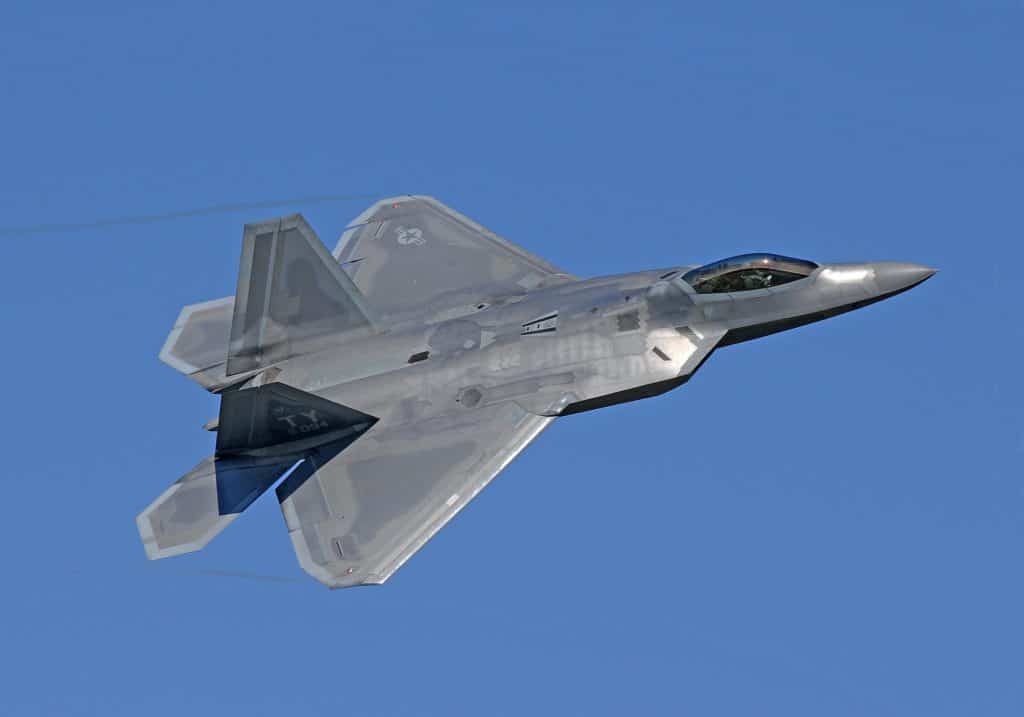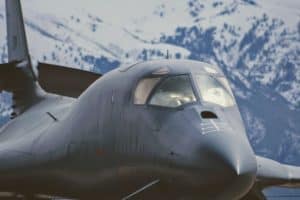Jump to...
Palace Front vs Palace Chase: A Comprehensive Guide to Guard/Reserve Pilot Transition Programs
Table of Contents

Welcome to our comprehensive guide on Palace Front and Palace Chase, two essential pilot transition programs designed to help active-duty pilots transition to the National Guard or Reserve units. In this detailed guide, we’ll explore the key differences between these two programs, outline their eligibility requirements, and provide insights into the application process.
By the end of this page, you’ll have a thorough understanding of how these transition programs can benefit you and how to navigate the steps to pursue a rewarding career as a Guard/Reserve pilot while maintaining a successful civilian career. Let’s dive in and discover the opportunities awaiting you in the world of Guard/Reserve aviation!
Definitions and Differences
Palace Front: Palace Front is a program designed for active-duty Air Force members who are approaching the end of their service commitment and wish to transition directly into the Air National Guard (ANG) or Air Force Reserve (AFR) without a break in service. This seamless transition allows service members to continue their military careers while also pursuing civilian opportunities. More information about the Palace Front program can be found on the Air National Guard website: https://www.goang.com/how-to-join/palace-front.html
Palace Chase: Palace Chase is a program that allows active-duty Air Force members to request an early release from their active-duty service commitment to join the ANG or AFR. In exchange for the early release, service members agree to serve double the remaining time on their active-duty commitment in the Guard or Reserve. The Palace Chase program provides a pathway for active-duty members seeking increased flexibility and opportunities to pursue civilian careers or education while still serving in the military. More information about the Palace Chase program can be found on the Air Force’s Personnel Center website: https://www.afpc.af.mil/Retention/Palace-Chase/
Eligibility and Application Process
- Eligibility: Both Palace Front and Palace Chase have specific eligibility requirements that must be met by active-duty service members.
Palace Front: Active-duty members must be within 6 months of their Date of Separation (DOS) or Expiration Term of Service (ETS) to apply for Palace Front.
Palace Chase: Active-duty members must have completed at least half of their initial active-duty service commitment to apply for Palace Chase. Additionally, they must not be currently serving on an active-duty service extension or have a pending assignment.
- Application Process:
Palace Front: To apply for the Palace Front program, service members should begin by contacting their local In-Service Recruiter (ISR) or the nearest Air National Guard or Air Force Reserve unit. The ISR will provide guidance on available positions, application procedures, and required paperwork. A list of ISRs can be found on the Air National Guard website: https://www.goang.com/how-to-join/in-service-recruiters.html
Palace Chase: Service members interested in applying for Palace Chase should start by contacting their local ISR for guidance on the application process. Next, they will need to submit an application through the virtual Military Personnel Flight (vMPF) system. The application package typically includes a completed AF Form 1288, an endorsement from the applicant’s chain of command, a letter explaining the reasons for the request, and any required supporting documentation. Once the application is submitted, it will be reviewed by the service member’s chain of command, the ISR, and finally, the Air Force Personnel Center (AFPC) for a final decision.

The Palace Front and Palace Chase programs provide valuable options for active-duty Air Force members seeking increased flexibility and opportunities in their military careers. By understanding the differences between the two programs, eligibility requirements, and application processes, service members can make informed decisions about their future and take advantage of these beneficial transition programs.
Palace Front vs. Palace Chase: Weighing Pros and Cons for Active Duty Pilots Transitioning to Guard/Reserve Units
Palace Front and Palace Chase are two programs designed to assist active-duty military pilots in transitioning to the National Guard or Reserve units while potentially pursuing a civilian career. Both programs have their own unique advantages and disadvantages. In this section, we will delve into the pros and cons of each program to help you make an informed decision about your future career path.
Palace Front
Pros:
- Seamless transition: Palace Front allows for a smooth transition from active duty to Guard/Reserve units immediately after the end of the active-duty service commitment. This minimizes the gap in employment and ensures continuity in your career.
- Retain benefits: Active-duty pilots transitioning through Palace Front maintain many of their military benefits, such as healthcare, retirement, and education benefits.
- Increased stability: Palace Front offers pilots the opportunity to serve in one location for an extended period, providing more stability and predictability in their personal lives.
Cons:
- Limited availability: Palace Front is only available to active-duty pilots who have completed their service commitment. This may not be suitable for pilots who want to transition earlier in their careers.
- Less flexibility: Compared to Palace Chase, Palace Front offers less flexibility in terms of choosing the specific Guard/Reserve unit and location.
Palace Chase
Pros:
- Early transition: Palace Chase allows pilots to transition to Guard/Reserve units before completing their active-duty service commitment, offering an earlier opportunity to pursue a civilian career or a more balanced lifestyle.
- Unit and location choice: Palace Chase provides pilots with more flexibility in selecting the Guard/Reserve unit and location they prefer, allowing them to tailor their career path and personal life more effectively.
- Retain benefits: Similar to Palace Front, pilots transitioning through Palace Chase also maintain many military benefits.
Cons:
- Longer service commitment: Pilots transitioning through Palace Chase must serve a longer commitment in the Guard/Reserve, typically at a 2:1 ratio (two months in Guard/Reserve for every one month of active-duty service remaining).
- Approval process: Palace Chase applicants must receive approval from their active-duty chain of command, which can be a lengthy and potentially challenging process.
Both Palace Front and Palace Chase offer unique advantages for active-duty pilots looking to transition to the Guard/Reserve units. Palace Front is ideal for pilots who have completed their service commitment and desire increased stability, while Palace Chase provides an opportunity for those who wish to transition earlier and have more flexibility in choosing their unit and location. Weighing the pros and cons of each program can help you determine the best path for your career and personal goals.
Ultimate Guide to Palace Chase & Palace Front: Seamless Transition for Active Duty Pilots
Palace Chase Guide for Active Duty Pilots
Step 1: Determine Eligibility Before you begin the Palace Chase process, ensure that you meet the eligibility requirements listed on the Air Force’s official website: https://www.afpc.af.mil/Separation/Active-Duty-Palace-Chase/
Step 2: Research Guard/Reserve Units Identify potential Guard/Reserve units that have open pilot positions. Visit their websites, learn about their mission, aircraft, and locations. A great starting point is the Pilot Pathfinder website’s “Guard/Reserves” section.
Step 3: Contact In-Service Recruiter Reach out to an In-Service Recruiter (ISR) in your desired Guard/Reserve unit to discuss the available pilot positions and application process. You can find ISR contact information on the unit’s official website or by contacting the unit directly.
Step 4: Gather Required Documentation Collect the necessary documentation for your application, including your military records, flight records, and any required forms. Your ISR will provide you with a list of required documents.

Step 5: Complete Application Submit your completed application and required documents to your ISR for review. Be prepared to answer any questions or provide additional information as needed.
Step 6: Interview Process If your application is approved, you may be invited to interview with the unit’s leadership. This may include a formal interview, as well as visits to the unit and its facilities.
Step 7: Conditional Release (DD Form 368) If selected, request a Conditional Release (DD Form 368) from your current commander. This form can be found on the Defense Finance and Accounting Service (DFAS) website: https://www.dfas.mil/forms/ddforms/dd0368/
Step 8: Approval Process Your ISR will forward your application and Conditional Release to the appropriate approval authority. Be prepared for a waiting period as your application is reviewed.
Step 9: Transfer to Guard/Reserve Unit Upon approval, you will receive orders to transfer to your new Guard/Reserve unit. Coordinate with your current unit and new unit to ensure a smooth transition.
Palace Front Guide for Active Duty Pilots

Step 1: Determine Eligibility Verify that you meet the eligibility criteria for Palace Front, which typically requires you to be within 180 days of your Date of Separation (DOS). Review the Air Force’s official website for more information: https://www.afpc.af.mil/Separation/Active-Duty-Palace-Front/
Step 2: Follow Steps 2-6 from the Palace Chase Guide Follow the same steps as in the Palace Chase process (Steps 2-6) to research Guard/Reserve units, contact an ISR, gather required documentation, complete the application, and go through the interview process.
Step 3: Transition to Guard/Reserve Unit Upon acceptance into a Guard/Reserve unit, coordinate your transition with your active-duty unit and your new unit. This may include out-processing from your current unit, obtaining a new military ID card, and coordinating any relocation or temporary duty assignments.
Remember to roam around the Pilot Pathfinder website for additional resources and support during your transition from active duty to the Guard/Reserves.


